Air Pressure Booster
Installing an Air Pressure Booster
Article Date: September, 2018
Article and Photography by Mark Quasius
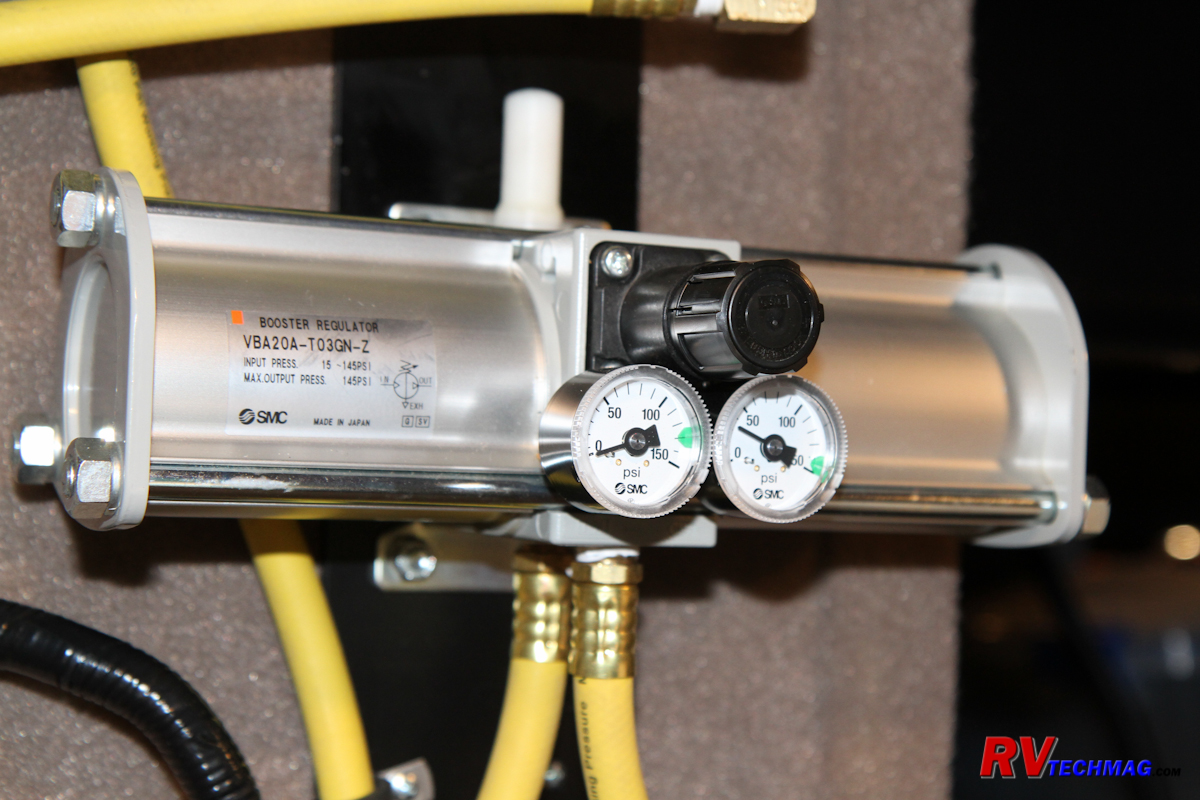
Front axles on diesel pusher motorhomes can require some fairly high inflation pressures. Ideally you'll use the coach's on-board
air supply to deliver filtered and dry air. These engine driven compressors deliver plenty of air volume to supply the air brakes and air-ride suspension
so using the auxiliary air supply connection on the coach is the perfect solution for tire inflation. But the compressors usually cut out at 125 PSI and
then kick back in again once the pressure drops to around 105 PSI. This can make for a long drawn out deal when attempting to inflate steer tires to 110
to 120 PSI as you wait for the compressor to cycle just to get those last few pounds in.
Fortunately, there is an answer. Industrial applications have been using an air transformer to boost air pressures to higher levels.
Air transformers are commonly referred to as air boosters and function by compressing the incoming air and expelling it at a higher pressure. It's much like
a second stage air compressor that trades volume (CFM) for pressure (PSI). The system operates by an air piston that shuttles back and forth. The piston is
propelled by the incoming air which also fills the secondary or output chamber. As the piston moves the air in the output chamber is compressed even further
and exits the chamber at up to 2 times the original pressure. The valving in the chamber then transfers the previous incoming air to the output chamber and
refills the input chamber to start the cycle all over again. So it's really an air compressor that is powered by compressed air. Most units will compress
the air to 2 times the incoming pressure, which is why they are sometimes referred to as air doublers. A pressure regulator on the unit will limit the
output air pressure to prevent excessive pressure from blowing air hoses or causing other damage. Air boosters are basically maintenance free and
the perfect solution for anyone who needs higher air pressures to inflate their tires.
Choosing a Unit
My first introduction to pressure boosters was when I saw an ad for a unit at Dickman Tires, a tire dealer in Junction City,
Oregon that specializes in RV tires and accessories. They put together a unit that was placed in a Pelican hard shell carrying case that could be used
anywhere. I decided that I would rather have a unit permanently installed rather than deal with yet more stuff to store in my cargo space but the idea
got me thinking about how handy it would be to have that higher pressure available to obtain 120 PSI for filling up my steer tires with less hassle. So
I decided to research a bit further and found that SMC, who is a major manufacturer of air system components and accessories, made a large line of air
transformers. I studied their spec sheets and chose the model VBA-20A-T03GN-Z pressure booster, which I found on Amazon. It was designed for 3/8" air
lines and was a good choice for the 18.7 CFM output of my coach's air compressor. It featured a 2X pressure boost but was equipped with pressure regulators.
I only needed 120 PSI for my steer tires, which meant a 60 PSI input pressure. I didn't want to see 200 PSI in my air hose when the input pressure was 100
PSI so I set the regulator for 140 PSI output, which was more than adequate for my application. The unit came with a pair of pressure gauges - one to
display the incoming air pressure and the other to display the regulator's output pressure.
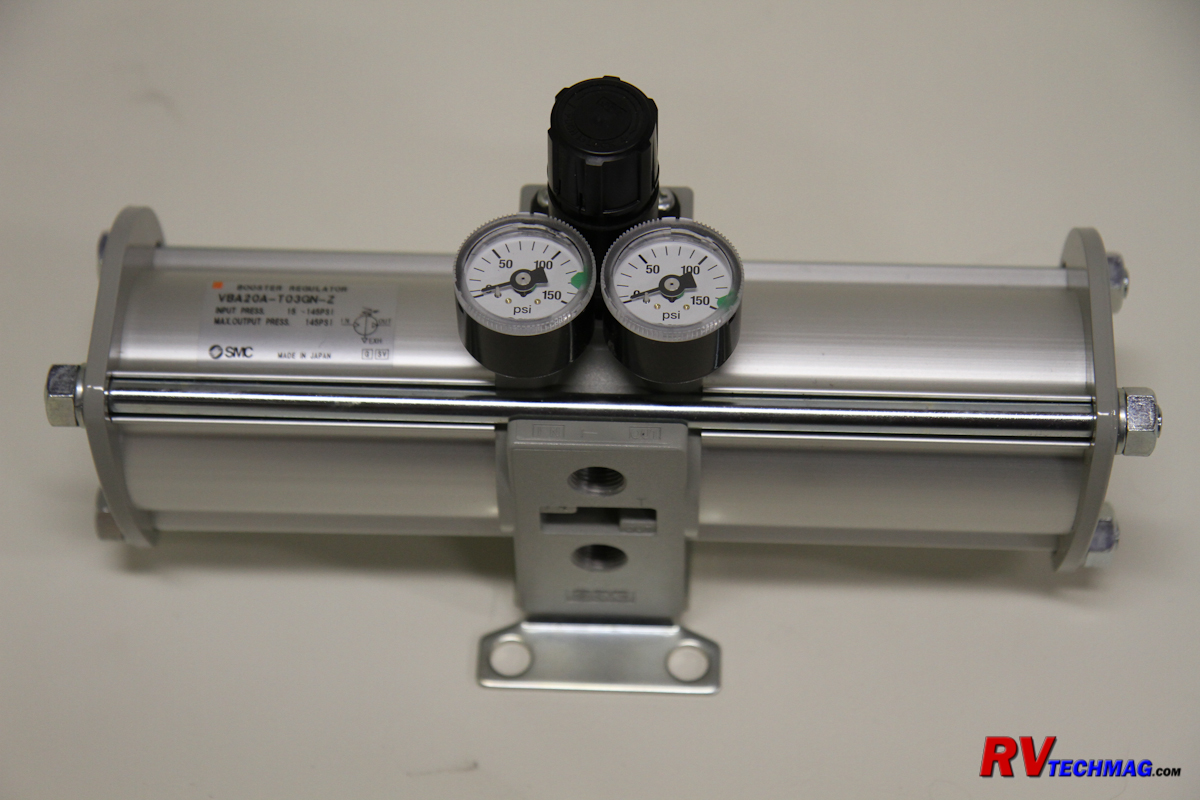
Installation
Our Cornerstone was equipped with multiple auxiliary air connections. One was back in the engine compartment but I didn't want to put
the air transformer back there where it was subject to lots of heat and environmental conditions. There was a pair of connections in the basement storage area
so I selected the one on the driver's side which was close to where I planned on mounting the booster. There was unused space up high on the basement compartment
wall that was available. I chose location that because it didn't intrude on any floor or storage space. It also gave me enough room to mount a Viair 12 volt
compressor and its requisite hose connections that I could use to keep the air tanks filled when parked so that the air leveling system could function as needed.
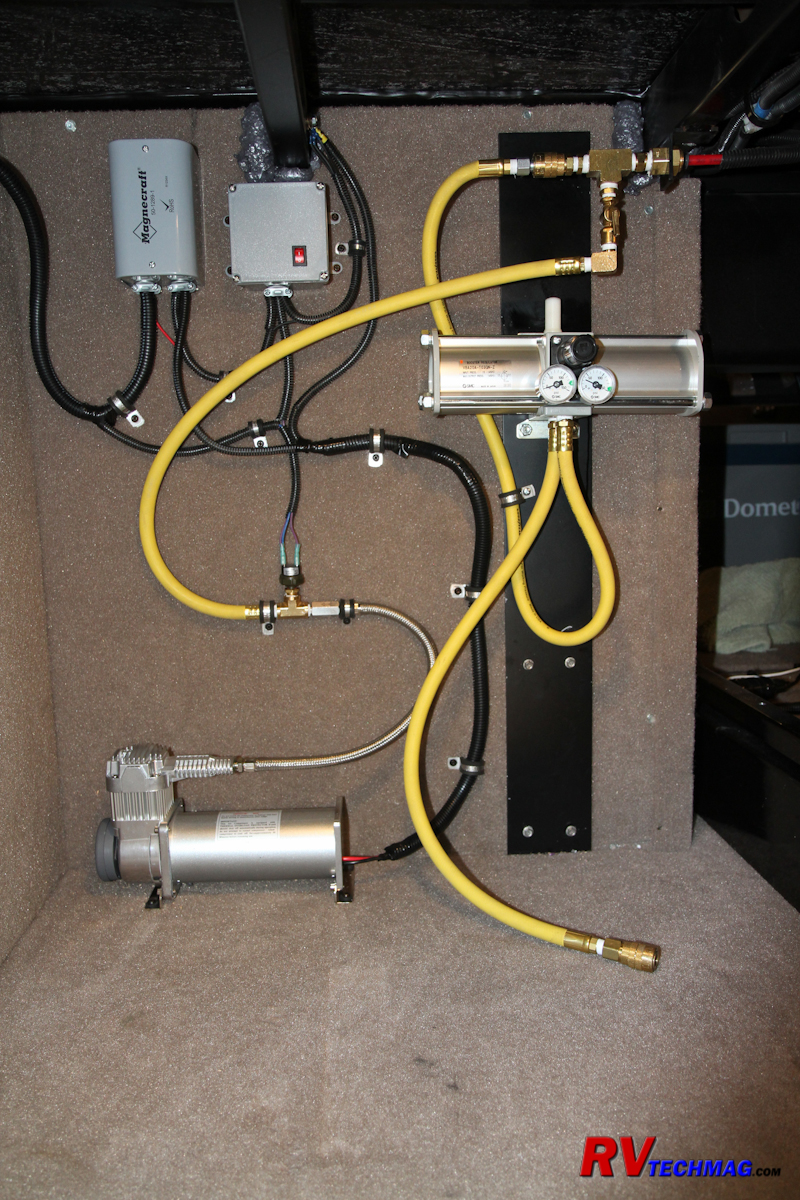
The booster was mounted on the back wall of the compartment, where I also added the Viair 12 volt compressor
The extra controls and hoses are all related to the compressor, not the booster.
The basement wall was plywood covered with carpeting. I didn't feel comfortable using four screws to mount the booster to the plywood
wall and I couldn't use bolts because the fuel tank was behind that wall and I wouldn't be able to access the backside of the panel to attach any nuts. I decided
to make a long steel plate that rested on the floor and was fastened to the wall with a number of screws. I them bolted the booster to the plate and fastened it
with nylon locknuts then screwed the plate to the wall. The booster had a pair of 3/8" MPT ports on the bottom - one for input and one for output. A small muffler
was included and I threaded that into the exhaust port n the top of the booster to muffler the sound of the piston's exhaust air. I also made a pair of 3/8"
whip hose with Milton S series quick disconnect couplers so that I can plug the booster into the coach's nearby auxiliary air connector whenever I wanted to
use it and easily connect my 50' air hose to the unit without having to crawl into the compartment. I chose to leave the unit disconnected until I needed to use
it but that's just a personal choice on my part to prevent any loss of air should a hose blow while traveling.
|
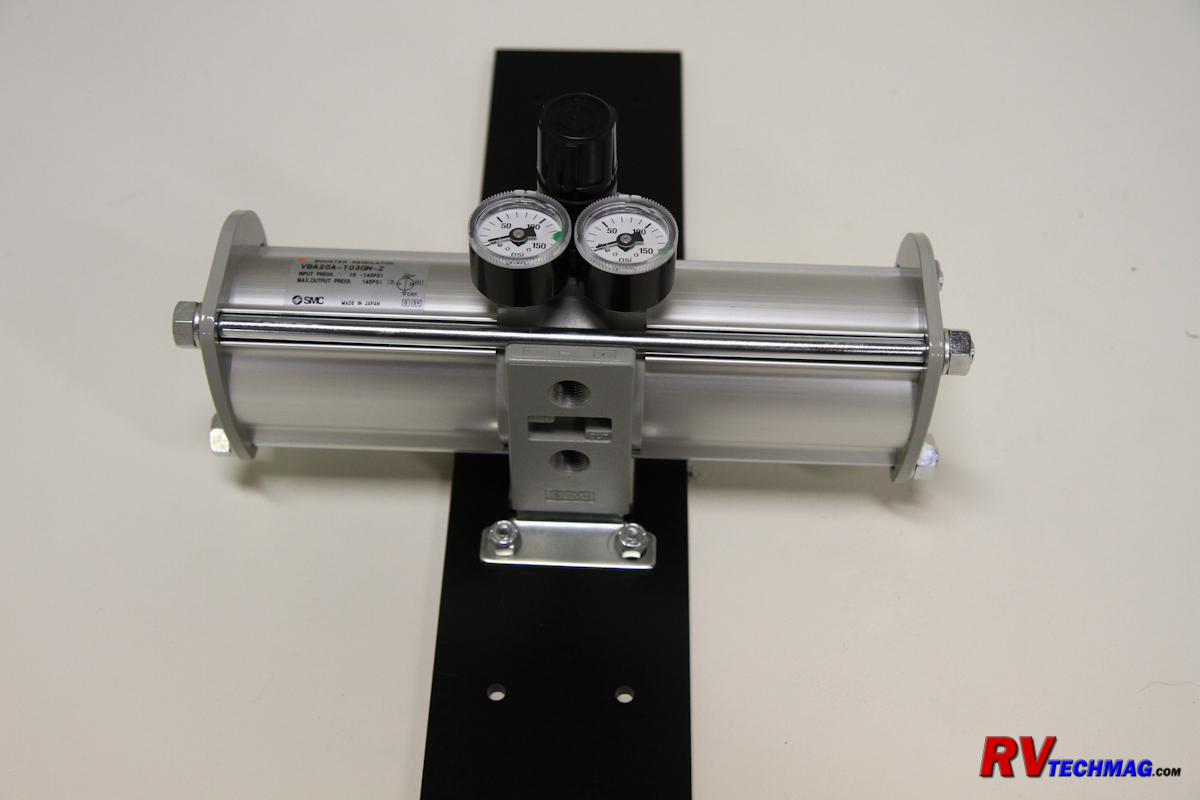
The booster was mounted to a steel adaptor plate to
provide greater strength in mounting.
|
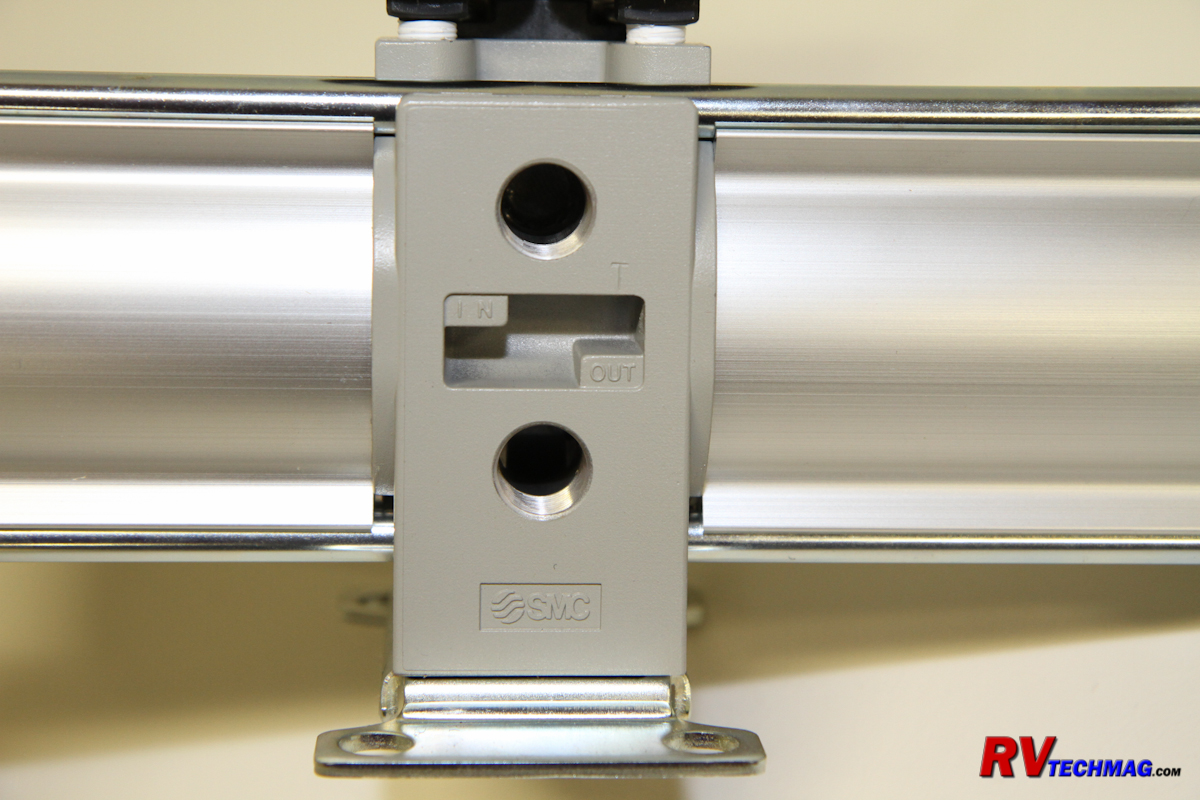
A pair of 3/8" ports on the base of the unit handle
input and output connections.
|
|
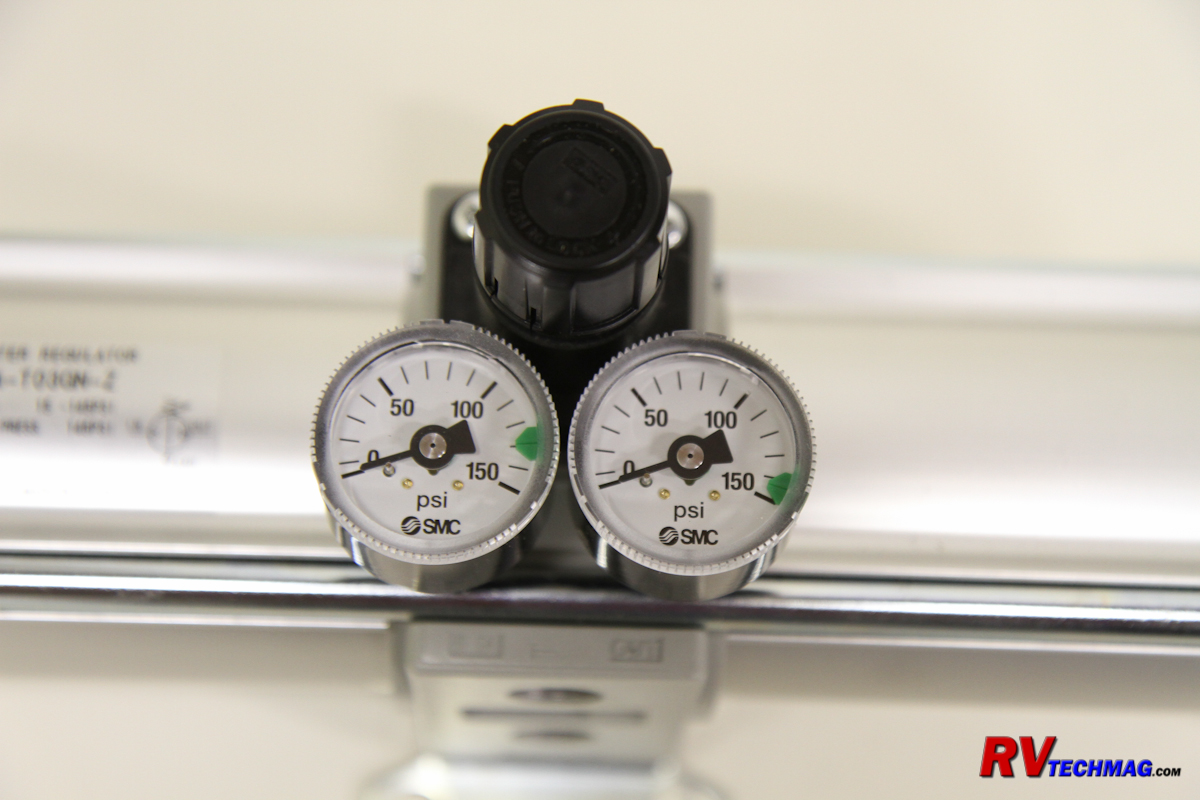
The booster is equipped with a regulator and pair of
pressure gauges. One gauge displays the incoming air
pressure while the second displays the regulator's
output pressure.
|
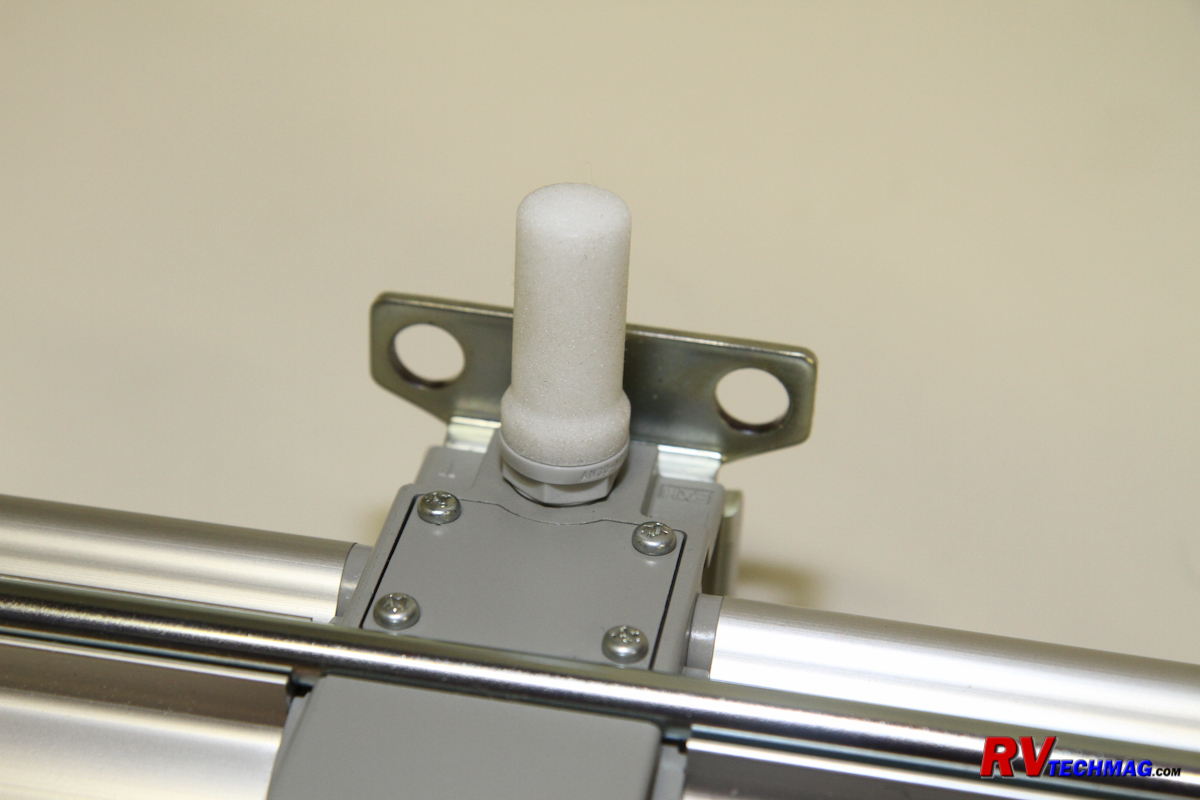
A muffler dampens the sound of the piston cycling.
|
Summary
Using the booster is fairly seamless. Instead of plugging my air hose into the coach's auxiliary output connector I now plug the booster
in that connection and then plug my hose into the booster. I have the regulator set to limit my output pressure to 140 PSI and I can now fill the front steer
tires in less time without having to worry about the coach air pressure being too low or the governor not kicking in. The unit doesn't take up any valuable
space and isn't one those things that you always have to service. In short, it's the perfect solution.
Source
SMC Pneumatics
(800) 660-0733
www.smcpneumatics.com
Return to Home Page
If you enjoyed this article be sure to recommend RVtechMag.com to your friends, like us on Facebook or Twitter
or subscribe to our RSS feed.



|











